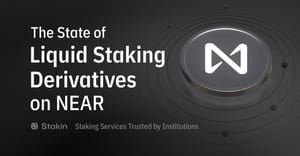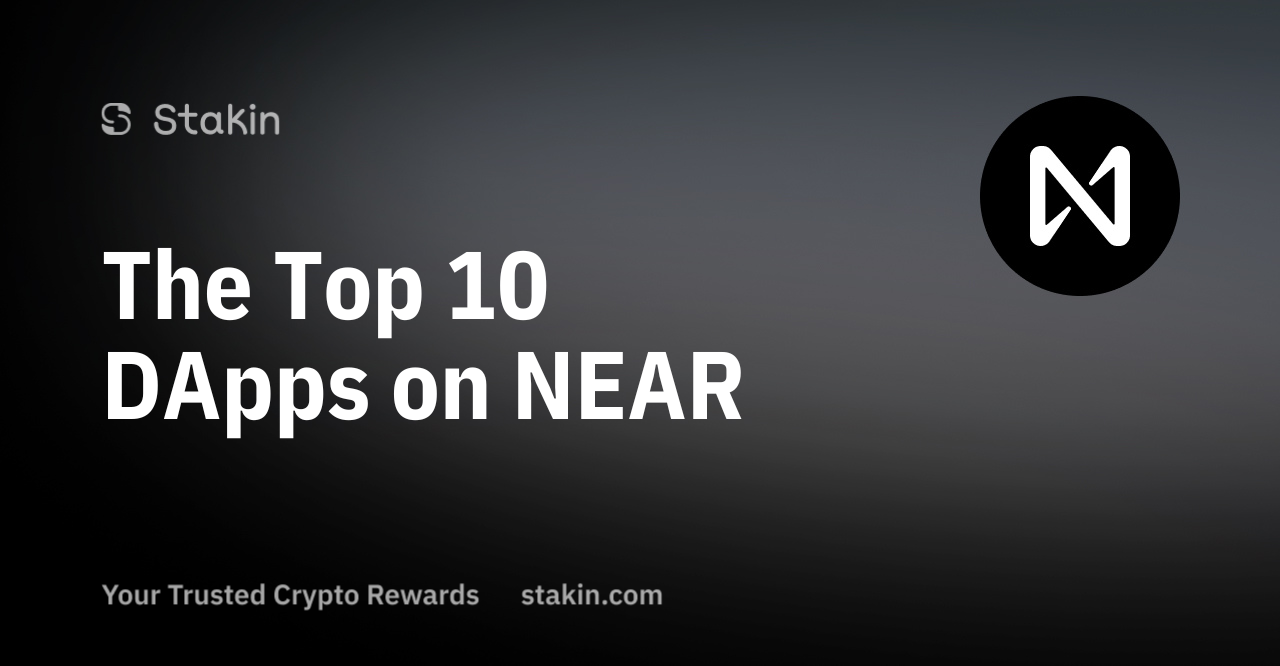One of the more novel applications of DeFi liquid staking derivatives (LSDs). What once dominated Ethereum has begun to span and connect other leading L1 ecosystems, such as NEAR protocol.
Let's explore popular liquid staking solutions for the NEAR protocol, such as Meta Pool, and the overall vision of NEAR towards enabling chain abstraction for Web3.
Meta Pool
Meta Pool is a multi-chain liquid staking ecosystem. Meta Pool users can receive new tokens (LSTs) of equivalent value to their staked assets which lets them earn extra rewards not only from staking but also from putting the capital to work across DeFi applications.
Currently, Meta Pool supports the following assets and corresponding LSTs:
- NEAR / stNEAR
- wNEAR / stNEAR
- Ethereum / mpETH
- Solana / mSOL
- Aurora / stAur
- Q / stQ
Meta Pool is governed by the community. META token holders are owners of the Meta Pool DAO, represented through the DAO's governance token, mpDAO.
The Meta Pool DAO supports various initiatives, including grants, selecting validators, and even a launchpad for new projects. One of the participants in the launchpad, Pembrock Finance, has raised as much as $1.61M from over 85 mpDAO holders.
You may also be interested in:
Meta Pool's launchpad provides incentives to support new projects. When a mpDAO holder supports a new project on the launchpad, they are rewarded with project tokens if the projects achieve their initial investment goal. After the fund period ends, Meta Bonds issue two bonds to backers: one in NEAR tokens reflecting the stNEAR's end-of-period valuation and another representing the gradual release of the supported project's tokens.
Additionally, by actively participating in the DAO, mpDAO holders can earn as much as 50% of all protocol fees. In other words, just by voting and actively participating in the DAO, you can earn rewards. There is a standard by which the rate is determined and is viewable here. The remaining 50% gets distributed to winning mpDAO grants.

Based on data from DeFi Llama, Meta Pool has over $153M as of March 15th in total value locked (TVL), second in line with LiNEAR Protocol with roughly $157M in TVL.
In the following section, we'll cover the LiNEAR protocol and its multi-chain liquid restaking approach.
Liquid Restaking Tokens
The liNEAR protocol is a multi-chain liquid staking protocol. Users can stake NEAR and other assets (once supported) and earn yields from staking and restaking. When users go to stake NEAR on LiNEAR, they will receive a $LiNEAR token. If users decide to restake their NEAR, they will receive a $bLiNEAR token which accrues both staking and restaking rewards.
Restaking enables the reuse of staked assets, such as staked ETH on Ethereum, for additional applications beyond the base layer protocol's security. Pioneered by EigenLayer, it increases potential returns for stakeholders by extending the base layer's security to other networks without inheriting the risks through introducing new assets.
Unlike LSTs, which are used solely to secure the PoS chain, liquid restaking tokens (LRTs) involve multiple Actively Validated Services (AVS), including various applications and networks. This diversity not only allows for a broader range of rewards but also means that the governance of an LRT protocol plays a more crucial role in its success, potentially offering higher value than LST protocols.
Ultimately, LiNEAR will play an important role in a key area called chain abstraction by enhancing security across various blockchains. This will be accomplished by utilizing LRTs to secure the decentralized infrastructure required for chain abstraction, such as the Chain Signature MPC network and the Intent Relayer network. This approach mitigates centralization risks, allows for capital efficiency, and aligns the interests of different blockchains.
Chain Abstraction For Web3
One of the biggest challenges when onboarding the next billion users onto Web3 is friction. For better or worse, in today's society, we take many things for granted. We value invisibility, whether we know it or not.
Billions of requests are made across the internet everyday. Most people don’t know or don’t care to know how the Internet works. The same applies to Web3 users. To truly see mass adoption of blockchain-based applications, they need to be frictionless, especially in the case of dApps.
That's where chain abstraction comes in.
Chain abstraction in NEAR's vision aims to make blockchain interactions seamless for users, enabling them to engage across multiple networks without concern for underlying blockchain complexities. It's a move towards a more integrated web3 experience, where users can perform transactions, access dApps, and navigate between services through a single interface without dealing with wallets, network switching, or transaction fees directly.
NEAR protocol has been actively working on building this "invisibility" layer.
On March 14th, 2024, NEAR announced a collaboration with The Graph by expanding subgraph support. This support offers developers streamlined data querying capabilities across over 40 blockchains.
This integration enhances NEAR's interoperability within the web3 ecosystem and facilitates efficient access to indexed blockchain data. This, in turn, can help lead to the development of more sophisticated, user-focused dApps through improved data retrieval and cross-chain compatibility.
Final Thoughts
LSDs on NEAR, such as the ones offered by Meta Pool and LiNEAR, demonstrate NEAR protocol's innovative approach to DeFi.
LiNEAR will help play a key role in NEAR's vision for chain abstraction. This vision aims to remove friction and complexity in blockchain interactions, promising a seamless web3 experience through initiatives like collaboration with The Graph for enhanced data accessibility.
NEAR's commitment to reducing barriers and improving security across blockchains signals an ambitious and potentially transformative future for web3 interoperability.
NEAR staking for institutional stakers
If you are a NEAR institutional staker, you can get customized staking package or related services. To know more contact us via our NEAR instutional staking page.



